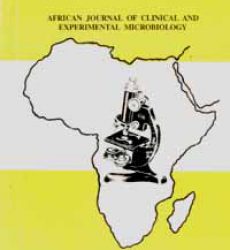*[1]Manga, M. M., 1Ibrahim, M., [2],[3]Ali, M. W., 4Warnow, I. E., 5Guduf, M. I., 6Farouk, H. U., 1Charanci, M. S., 1Galadima, G. B., and 2,3,7Fadare, J. O.
1Department of Medical Microbiology and Immunology, Gombe State University / Federal Teaching Hospital Gombe, Nigeria
2Department of Clinical Pharmacology and Therapeutics, Gombe State University, Gombe, Nigeria
3Department of Medicine, Federal Teaching Hospital Gombe, Nigeria
4Department of Paediatrics, Gombe State University / Federal Teaching Hospital Gombe, Nigeria
5Department of Surgery, Gombe State University / Federal Teaching Hospital Gombe, Nigeria
6Department of Obstetrics and Gynaecology, Gombe State University / Federal Teaching Hospital Gombe, Nigeria
7Department of Pharmacology and Therapeutics, College of Medicine, Ekiti State University, Ado-Ekiti, Nigeria *Correspondence to: drmmanga@gsu.edu.ng; +2348036781726
Abstract:
Background: Antibiograms and antibiotic guidelines are important tools for appropriate prescribing practices in combating the antimicrobial resistance (AMR) challenge. They serve as a prelude to an evidence-based Antimicrobial Stewardship (AMS) program, which is necessary for better Infection Prevention and Control (IPC) activities, especially in low-resource settings like Nigeria. This study determined the bacterial profile and antibiogram of clinical isolates in a tertiary healthcare facility in Gombe, northeastern Nigeria.
Methodology: This was a 4-year retrospective descriptive analysis of bacterial isolates from in and outpatient clinical specimens submitted to the Medical Microbiology Laboratory of the hospital between January 2019 to December 2022. Specimens were cultured for bacterial isolation and phenotypic identification using conventional techniques. Antibiotic susceptibility test was performed on each isolate by the Kirby Bauer disc diffusion method.
Results: A total of 15,457 bacteria were isolated over the 4-year period and include Staphylococcus aureus (6604, 42.72%), Klebsiella species (2382, 15.41%), Escherichia coli (2140, 13.84%), Pseudomonas species (1429, 9.25%), Proteus species (469, 3.03%) and Enterococcus species (215, 1.39%). The overall susceptibility (antibiogram) of all the bacterial isolates to commonly used antibiotics over the 4-year period was 59.0% for gentamicin, 54.5% for levofloxacin, 50.6% to ciprofloxacin, 48.5% to ceftriaxone, 48.5% to ceftazidime, and 41.9% to amoxicillin/clavulanate. Resistance rate was more than 50.0% for many of the tested antibiotics (ceftriaxone, ceftazidime, amoxicillin/clavulanate, and cefoxitin).
Conclusion: There was high level of resistance to many routinely used antibiotics tested in our facility. There is need for evidence-based AMS programmes hinged on local antibiotic guidelines for better patient safety and improved healthcare quality particularly in resource poor settings.
Keywords: Antibiogram, Antimicrobial Stewardship, Antibiotic Guidelines, Infection Prevention & Control
Download this Article in PDF format below

